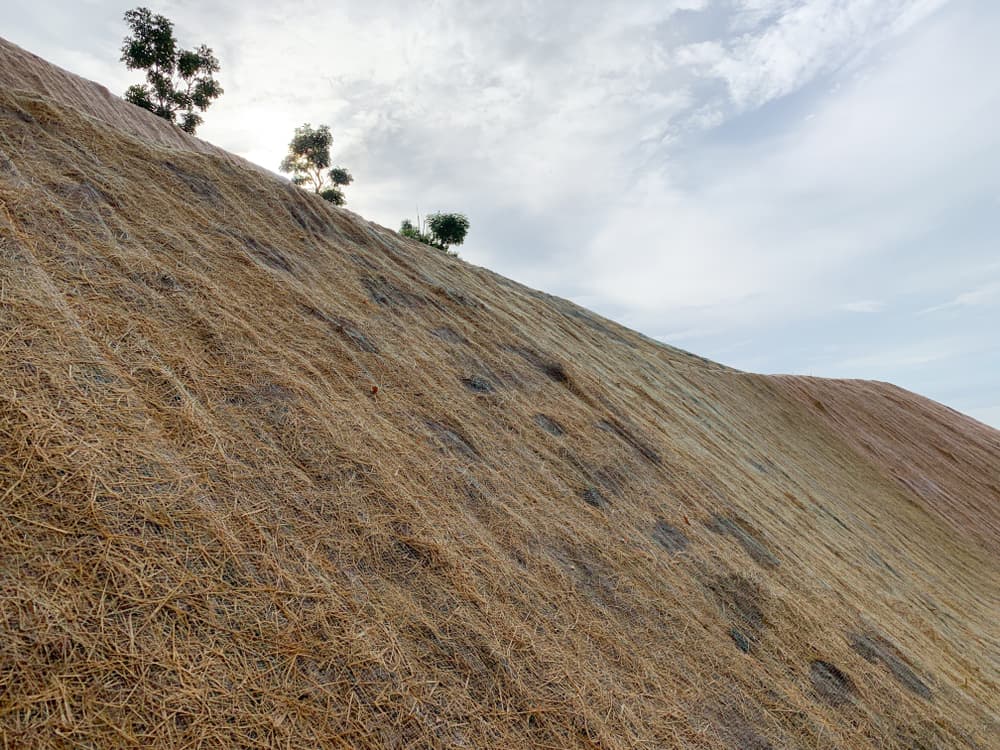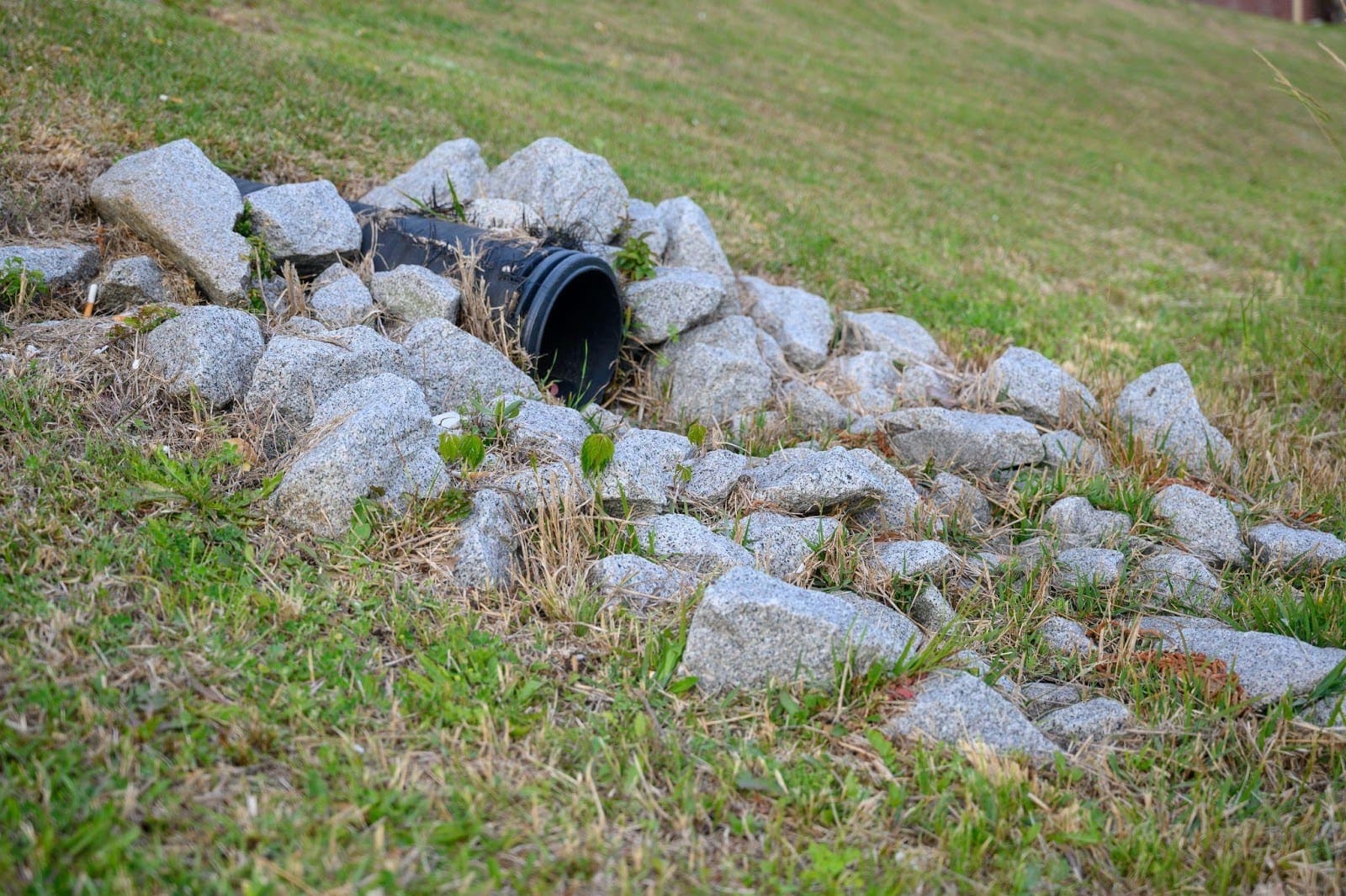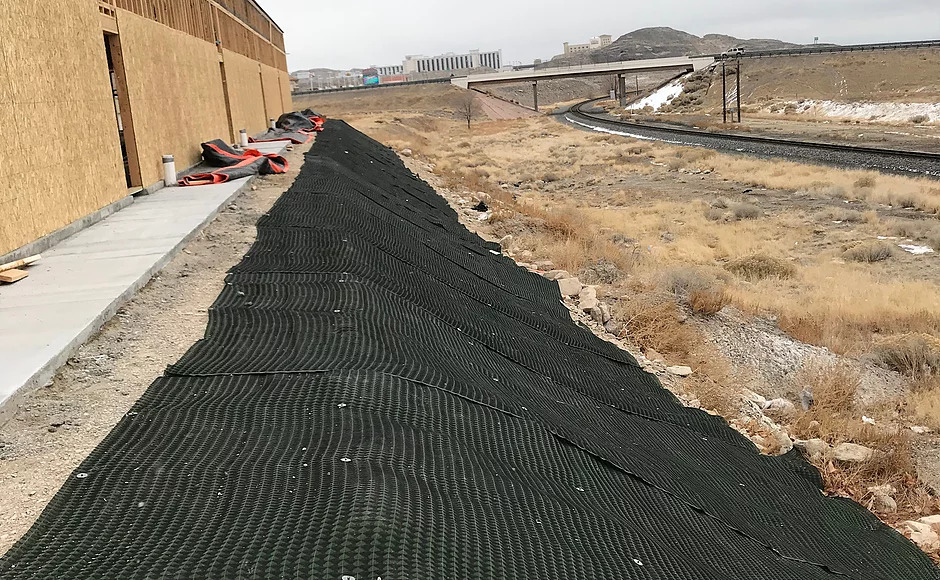It doesn’t take long for exposed soil to become eroded, which is why we have erosion control solutions. Rain, wind, and runoff can strip away topsoil, clog nearby storm drains, and cause costly damage to the landscape and infrastructure.
That’s why erosion control solutions are more than a best practice — they are a requirement on most regulated job sites.
The erosion control blanket is one of the most effective tools for immediate and long-lasting stabilization. These simple, rolled mats help lock soil in place, support vegetation growth, and reduce sediment runoff.
Whether you’re working on a steep slope or prepping for revegetation, erosion control blankets offer reliable protection that supports both compliance and environmental responsibility.
In this blog, we’ll explain how erosion control blankets work, explore the available types, and walk through when, where, and how to use them properly. If your site has bare soil, these blankets might be the protection you didn’t know you needed.
What are erosion control blankets?
Erosion control blankets are specially designed mats used to protect bare soil from wind and water erosion. They’re most commonly applied to slopes, ditches, and disturbed land where loose soil is vulnerable to runoff or displacement. These blankets provide immediate surface protection while also helping to promote vegetation growth underneath.
Most erosion control blankets are made from natural fibers like straw, coconut coir, or wood excelsior, stitched together with biodegradable or synthetic netting. Others use synthetic materials for longer-lasting reinforcement. These rolled blankets are installed directly over exposed soil and secured with stakes or staples to keep them in place.
In addition to reducing erosion, these blankets help retain moisture, stabilize temperature at the soil surface, and protect newly planted seeds from being washed away. Whether used for temporary stabilization during construction or long-term slope support, erosion control blankets are a practical, effective, and field-proven solution.
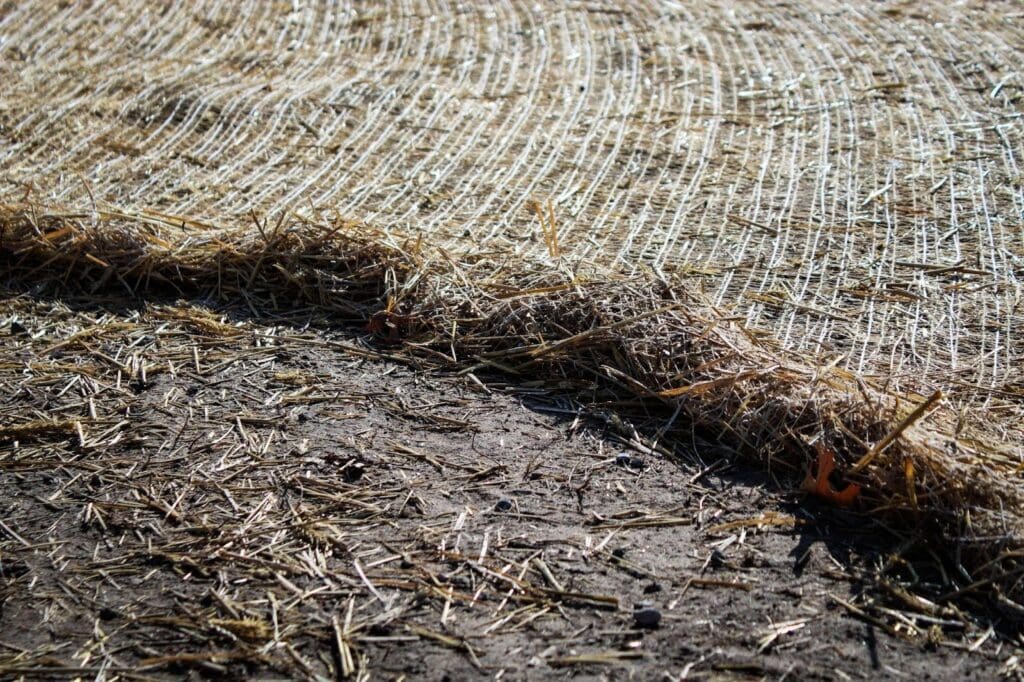
Different types of erosion control blankets
Not all erosion control blankets are the same. The right type depends on your site’s slope, soil condition, vegetation plan, and how long the area needs to stay protected. Here’s a breakdown of the most common types:
Single-net blankets
These blankets have a single layer of netting stitched over straw, coir, or excelsior fibers. They’re lightweight, ideal for gentle slopes or flat areas, and designed for short-term use, typically lasting up to 12 months. They’re great for temporary stabilization while vegetation takes root.
Double-net blankets
Stronger than single-net options, double-net blankets feature two layers of netting (top and bottom) surrounding the inner fiber mat. They’re suitable for moderate slopes or areas with higher runoff and last longer (up to 24 months). These are commonly used on construction site embankments and drainage channels.
Excelsior blankets
Made from shredded wood fibers, excelsior blankets are known for their strength and consistent performance. They’re especially effective on slopes and areas prone to wind erosion. Their natural structure helps hold soil in place while allowing moisture and sunlight through.
Coconut (coir) fiber blankets
These offer longer-lasting protection, often up to three years. Coir fibers are denser and decompose more slowly, making them perfect for steep slopes, heavy rainfall zones, or long-term revegetation projects.
Synthetic and blended blankets
For extended projects or areas requiring reinforced control, synthetic blankets or natural-synthetic blends provide added durability. These may include UV-resistant nets or erosion mats made for permanent stabilization alongside turf reinforcement.
When and where to use erosion control blankets
Erosion control blankets are most effective anywhere bare soil is exposed and at risk of being displaced by wind, rain, or foot traffic. They’re commonly used during construction, landscaping, and restoration projects where you need temporary or long-term stabilization.
Here are the most common places to use them:
- Slopes and embankments – especially after grading or excavation
- Roadside ditches and drainage channels – to control sediment movement
- Construction site perimeters – to protect disturbed areas from erosion
- Revegetation zones – to keep soil in place while grass or native plants take hold
- Shorelines, streambanks, and culvert outfalls – for added slope protection near water
You should install erosion control blankets immediately after grading or soil disturbance, especially if rain is in the forecast. They help prevent runoff from washing soil away before vegetation can stabilize the area.
In many cases, they’re required as part of a SWPPP (Stormwater Pollution Prevention Plan) or to meet local permit conditions for slope stabilization and sediment control.
Whether you’re protecting a construction site or restoring a natural area, erosion control blankets provide reliable, immediate coverage to keep your project compliant and your soil in place.
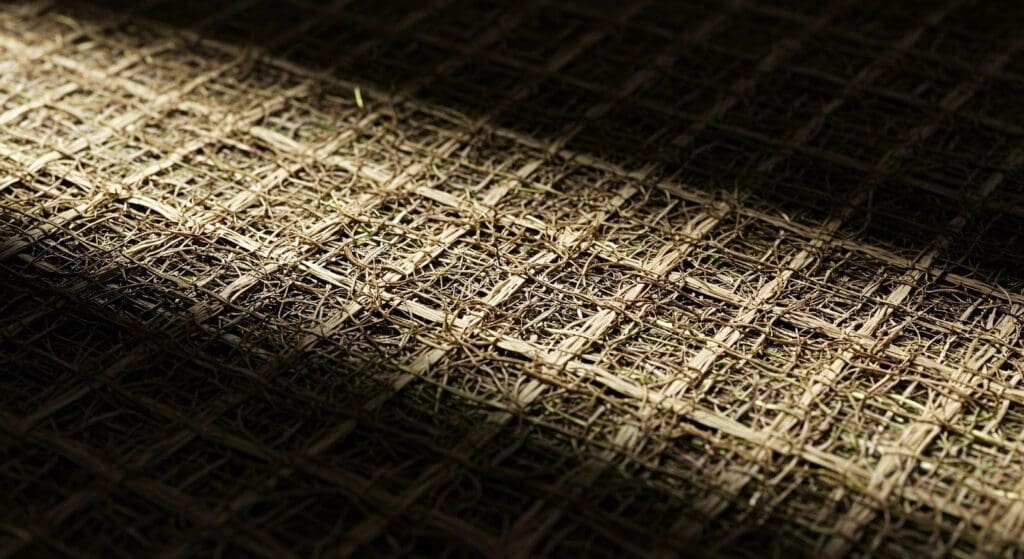
Installation best practices
Proper installation maximizes the benefits of an erosion control blanket. If it’s not securely anchored or laid out correctly, even the best material won’t stop erosion or pass inspection. Following proven installation steps ensures the blanket performs as intended and supports vegetation growth.
Grade and smooth the surface first
Remove rocks, debris, and uneven soil. The surface should be compact and smooth to allow full contact between the blanket and the soil.
Seed before placing the blanket
If the goal is to establish vegetation, apply seed directly to the soil before laying the blanket. This lets new plants take root under the cover and grow through the matting.
Lay blankets in the direction of water flow
Always roll blankets downhill, not across slopes. This prevents water from catching and lifting the material.
Overlap edges properly
Overlap the edges of adjacent blankets by at least three to six inches and end-to-end overlaps by six to 12 inches. On steep slopes, larger overlaps help prevent gaps and undermining.
Anchor securely with stakes or staples
Use metal staples or wood stakes to secure the blanket every three to five feet along the edges, center, and seams. Increase anchoring on steep slopes or high-flow areas.
Avoid shortcuts
Don’t skip seeding, skimp on anchors, or install on unprepared soil. These are the most common causes of failure and rework.
For best results — and full compliance with your SWPPP — it’s smart to work with experienced crews who know how to match the blanket type to the terrain and install it to spec. Erosion Control Services offers professional blanket installation that saves time, prevents erosion, and meets regulatory standards.
Protect your site with Erosion Control Services
Erosion doesn’t wait, and neither should you. Get the expert erosion control solutions you need. Whether you’re stabilizing a slope, starting a new project, or restoring a disturbed area, erosion control blankets offer fast, effective protection. But the right results begin with the right team.
At Erosion Control Services, we provide expert guidance, quality materials, and professional installation for every erosion control need. From blanket selection to SWPPP compliance, we make sure your site stays secure, compliant, and built to last.
Contact Erosion Control Services today for tailored erosion control solutions that keep your soil in place and your project on track.

